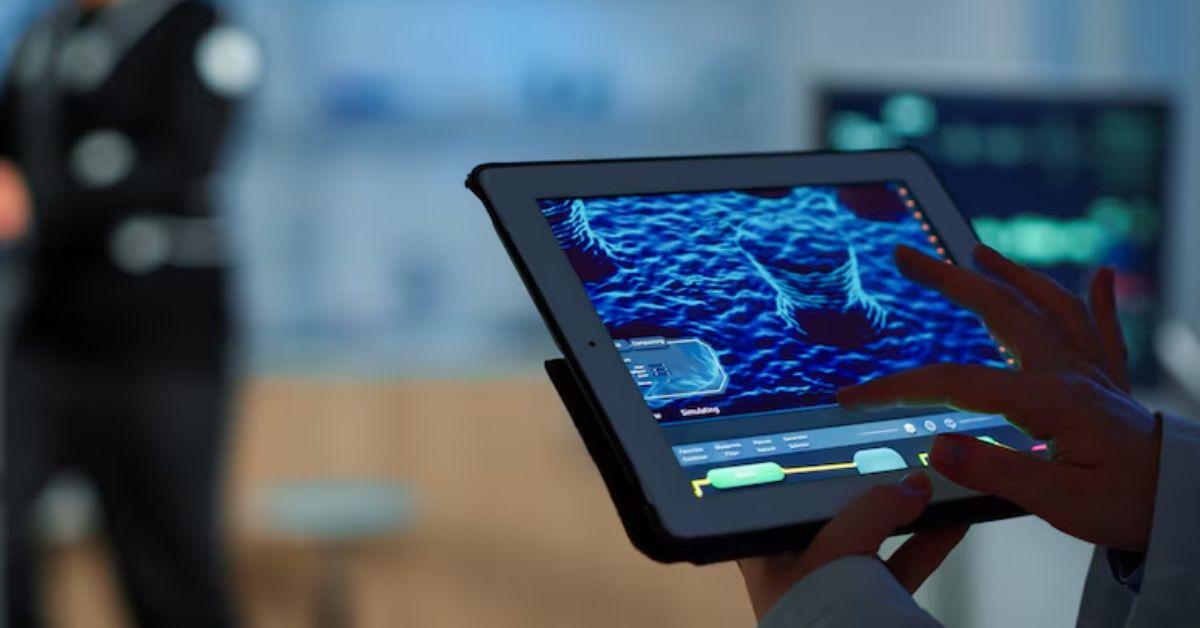If you’re searching for “ocean electronic,” you’re likely interested in how technology intersects with marine science, underwater communication, or ocean exploration. Ocean electronic refers broadly to electronic systems and devices that operate in or interact with marine environments—systems designed not only to endure the extreme conditions of the ocean but also to transform how we understand and manage our planet’s largest ecosystem. From autonomous submarines to underwater sensor networks, ocean electronic technology is quietly revolutionizing everything from climate science to national security.
This article takes an in-depth look at what ocean electronic means today and where it’s headed—offering insights into the tools, technologies, applications, challenges, and future of underwater electronics. While often overlooked in mainstream discourse, ocean electronics are becoming critical infrastructure in a rapidly changing world.
Defining Ocean Electronic: What Does It Encompass?
The term “ocean electronic” refers to a specialized field of electronics engineered for use in marine environments. These systems must operate under high pressure, resist corrosion from saltwater, and function accurately despite variables like temperature gradients, darkness, and electromagnetic interference.
Ocean electronics can be found in a wide range of applications:
- Scientific Research
Measuring currents, temperature, salinity, pH, and underwater seismic activity. - Military and Defense
Submarine detection, underwater surveillance, and secure communication networks. - Commercial Applications
Oil and gas exploration, undersea mining, underwater pipeline monitoring. - Environmental Monitoring
Tracking pollution, ocean acidification, coral reef health, and fish migration. - Communication Systems
Subsea cable management and underwater acoustic data transmission.
Core Components of Ocean Electronic Systems
| Component | Function |
|---|---|
| Sensors | Detect physical or chemical properties like pressure, temperature, salinity |
| Transducers | Convert energy from one form to another (e.g., sound waves to signals) |
| Power Units | Supply electricity in deep-sea conditions (often battery-based or kinetic) |
| Communication Modules | Transmit data wirelessly or via cable from ocean to surface |
| Embedded Controllers | Process input from sensors and manage real-time data collection |
| Protective Housing | Shields sensitive electronics from pressure, corrosion, and organisms |
Historical Context: How Ocean Electronics Emerged
The field of ocean electronics began gaining traction in the post-WWII era, when underwater sonar and communication systems were first widely used for naval operations. Since then, technological advancements in materials science, microelectronics, and wireless data transmission have pushed the boundaries of what ocean electronics can do.
Earlier versions of these systems were bulky, unreliable, and short-lived in deep water. Today, they’re micro-sized, remotely programmable, and built to last for years in high-pressure environments.
Applications of Ocean Electronic Technologies
1. Autonomous Underwater Vehicles (AUVs)
AUVs are robotic devices that collect data from deep-sea environments without direct human control. Fitted with various ocean electronics, they are vital tools in deep-sea mapping, wreck discovery, and environmental monitoring.
Ocean Electronic Features in AUVs:
- Pressure-resistant computing units
- Sonar imaging systems
- GPS-independent navigation (dead reckoning, inertial systems)
- Multi-sensor arrays
2. Underwater Sensor Networks
Also called Ocean Observatories, these are clusters of sensors installed at various depths and locations in the ocean to continuously monitor environmental conditions.
Key Features:
- Real-time data transmission
- Energy-efficient embedded systems
- Satellite or surface-buoy connectivity
- AI-based anomaly detection
These networks are the backbone of climate models, tsunami prediction systems, and fisheries management platforms.
3. Subsea Communication Systems
Unlike land-based networks, undersea communications rely on a combination of fiber optic cables and acoustic modems. Ocean electronics enable two types of communication:
- Hardwired (via cables): Fast but expensive and vulnerable to physical damage.
- Acoustic (wireless): Slower but flexible and essential for mobile or deep-sea deployments.
Communication modules are crucial for offshore platforms, submarines, and AUV fleets to coordinate activities and relay findings.
4. Offshore Energy Infrastructure
In the renewable energy space, ocean electronics are critical for wind farms and wave energy converters. They monitor:
- Mechanical stress
- Power output
- Corrosion and structural fatigue
- Environmental impact (marine life disturbance)
Ocean electronic systems here must integrate seamlessly with AI and SCADA (Supervisory Control and Data Acquisition) systems.
Challenges in Designing Ocean Electronics
Creating systems that thrive underwater involves more than waterproofing. Here are the primary challenges engineers face:
1. Extreme Pressure
For every 10 meters of depth, pressure increases by about 1 atmosphere. At 1,000 meters, pressure reaches 100 atmospheres—enough to crush conventional electronics unless protected by specially designed housings.
2. Corrosion Resistance
Saltwater is highly corrosive. Electronic enclosures must be made of or coated with materials like titanium, specialized polymers, or marine-grade stainless steel.
3. Biofouling
Marine organisms such as barnacles and algae attach to submerged electronics, impairing sensors and disrupting heat exchange systems.
4. Power Limitations
Without direct access to a power grid, underwater systems rely on:
- Long-life lithium batteries
- Thermal gradient harvesting
- Kinetic energy from ocean currents
5. Data Transmission Barriers
Radio waves do not travel well in saltwater. Alternatives like sonar, optical lasers, or magnetic induction are employed but have limited range or speed.
Innovations in Ocean Electronic Technology
AI-Powered Marine Systems
Artificial Intelligence is enabling real-time decision-making and anomaly detection in underwater vehicles. AUVs can now:
- Avoid obstacles autonomously
- Adjust sampling routines in real-time
- Conduct species identification using image recognition
Graphene-Based Sensors
Graphene is emerging as a preferred material for ocean sensors due to its flexibility, conductivity, and resistance to salt corrosion.
Wireless Energy Transfer
Engineers are exploring underwater charging systems using magnetic induction, allowing AUVs to recharge at seabed stations, much like electric vehicles do at ground-based charging ports.
Smart Buoy Networks
Buoys equipped with ocean electronics now act as real-time communication relays, data collectors, and environmental sentinels. These systems offer:
- GPS positioning
- Long-range satellite links
- Solar-powered data platforms
The Role of Ocean Electronics in Climate Science
Climate change is deeply linked to the ocean. Over 90% of the Earth’s excess heat is absorbed by oceans. Ocean electronics help measure:
- Sea level rise
- Ocean acidification
- Thermal layering
- Ice melt and salinity shifts
Autonomous floats like those in the Argo program offer near-real-time data, revolutionizing our climate forecasting models.
Commercial Impact: Ocean Electronics in Industry
| Industry | Application |
|---|---|
| Oil & Gas | Pipeline monitoring, seismic mapping |
| Shipping | Route optimization, obstacle detection |
| Aquaculture | Fish behavior monitoring, water quality tracking |
| Underwater Mining | Locating and evaluating seabed minerals |
| Telecom | Maintenance and installation of fiber optic cables |
Ocean are no longer niche—they are foundational to the ocean-based economy, known as the Blue Economy, which is projected to grow to $3 trillion by 2030.
Future Trends and Opportunities
As we look ahead, several major shifts will likely define the future of ocean electronics:
Miniaturization
Smaller, more energy-efficient chips allow deeper and longer deployment of sensors, enabling higher data resolution.
Cybersecurity in Underwater Networks
As oceanic systems become more connected, protecting data integrity and preventing cyber-attacks on critical infrastructure will be paramount.
Citizen Science & Low-Cost Sensors
DIY ocean kits are emerging for educational and grassroots conservation work. Open-source ocean data will democratize marine science.
Space-Ocean Synergy
Satellites now coordinate with ocean sensors to offer combined datasets, crucial for understanding planetary-scale phenomena.
READ MORE: GiftUtility.com: The Next Generation of Gifting Technology
Conclusion
Ocean electronic isn’t just a technological field—it’s a vital frontier in our exploration of Earth and our effort to address climate change, resource management, and maritime security. From deep-sea sensors to AI-driven submarines, these devices shape how we understand the watery world beneath us.
In a time when our oceans are under increasing stress from warming, pollution, and overexploitation, the importance of intelligent, resilient, and sustainable marine electronics cannot be overstated. Whether as a keyword, a concept, or a career path, ocean electronic is a deep dive into the future of our blue planet.
FAQs
1. What is the main use of ocean electronic systems?
They are primarily used for underwater sensing, communication, and data collection in scientific, commercial, and defense sectors.
2. How do ocean electronics transmit data underwater?
They use acoustic signals or fiber optic cables. Radio waves are ineffective underwater due to high attenuation.
3. Are ocean electronics environmentally safe?
Yes, most are designed to minimize ecological disruption and are tested for bio-compatibility and material longevity.
4. What powers ocean electronic devices?
They are usually powered by lithium batteries, solar panels on surface buoys, or energy-harvesting systems based on motion or temperature gradients.
5. Can I buy or build ocean electronics as an individual?
Yes. DIY kits, microcontrollers, and open-source platforms like Arduino have made basic ocean sensor development accessible to hobbyists and educators.









